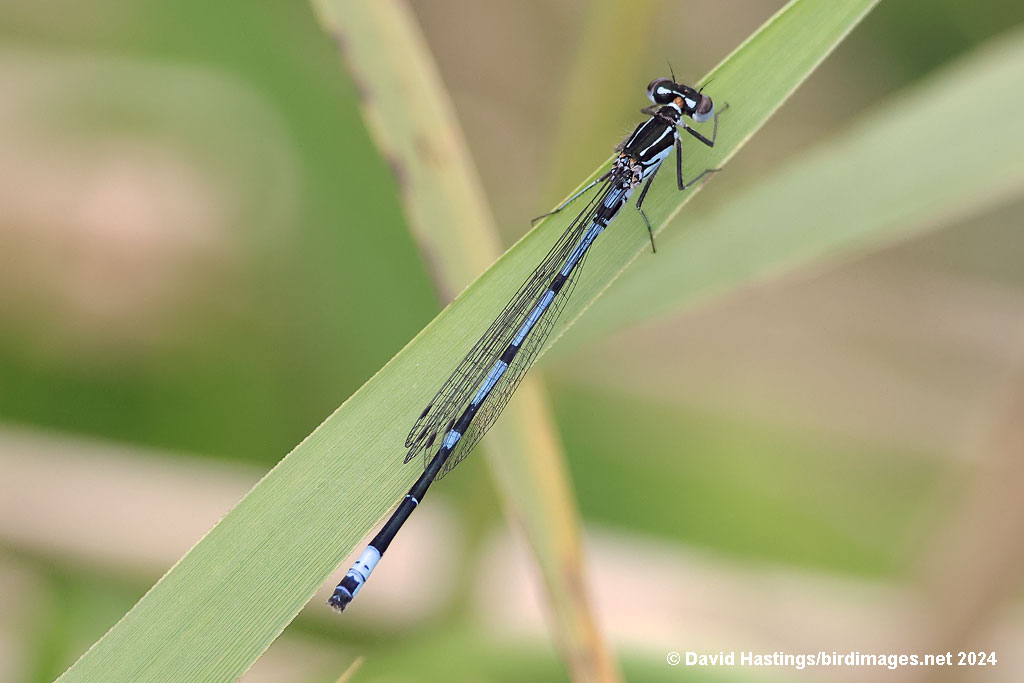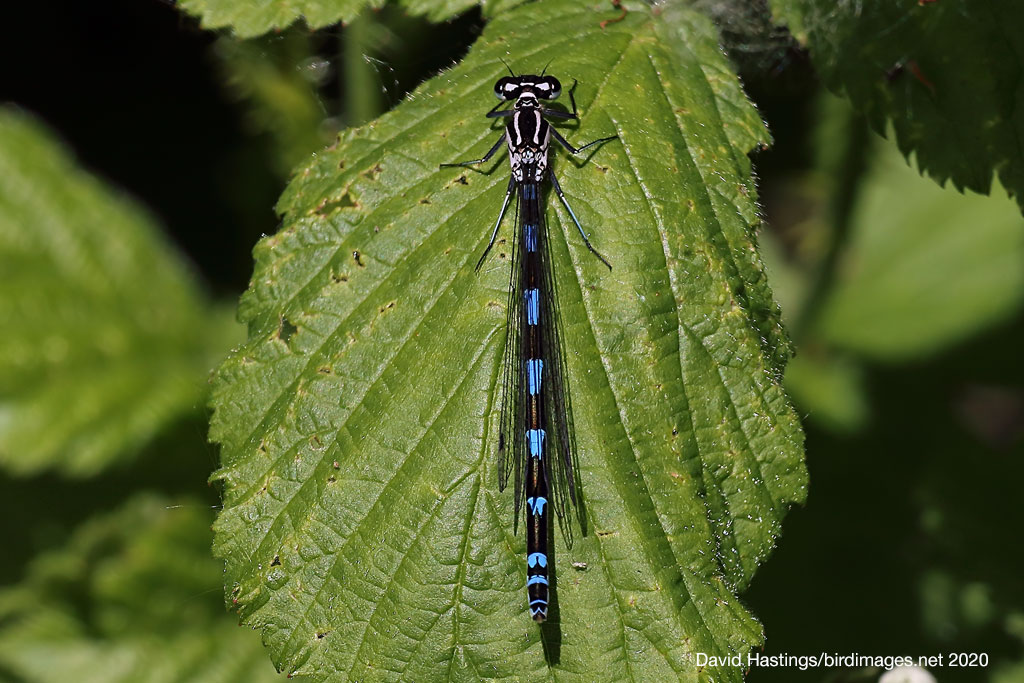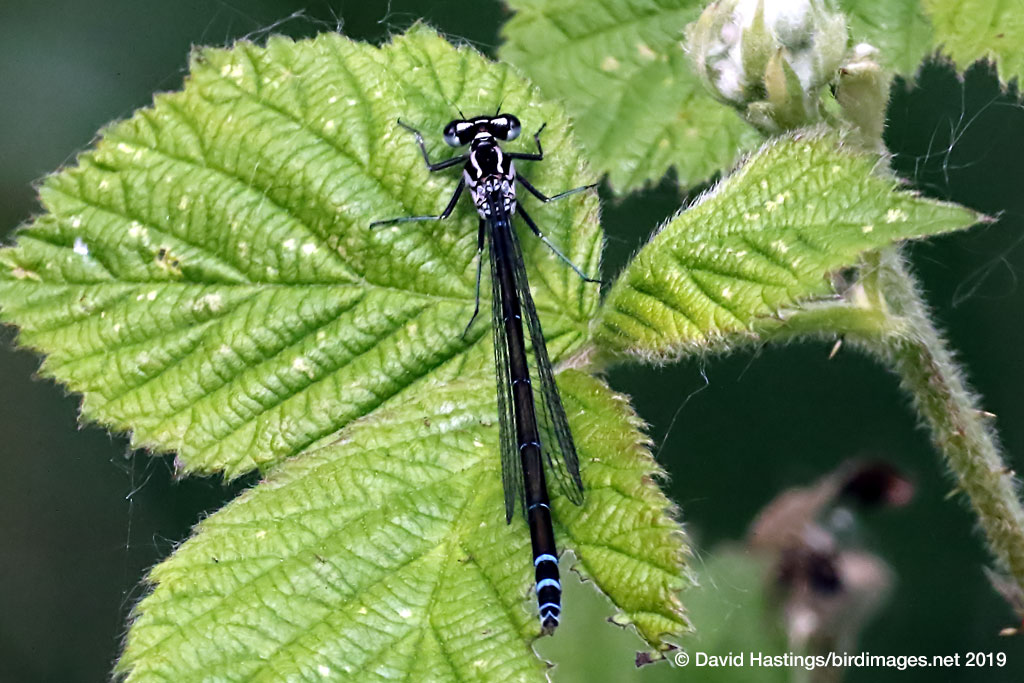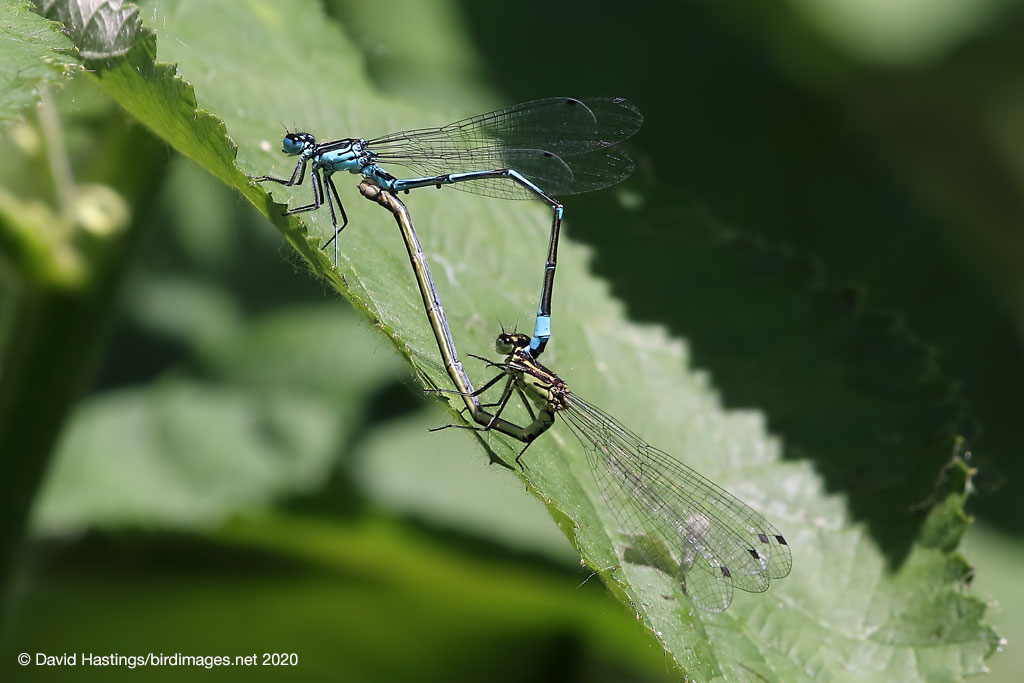Variable Damselfly (Coenagrion pulchellum) | Species | ||||||||||||||||||||||||||||||||||||||||||||||||||||||||||||||||||||||||||||||||||||
Male. Taken at Catfield Fen, Norfolk, on June 15th 2024. (© David Hastings) (1/800th sec at f8. Click image for larger version) Male. Taken at How Hill, Norfolk, on June 16th 2024. (© David Hastings) (1/800th sec at f14. Click image for larger version) Female (blue form). Taken at Abingdon, Oxon., on May 14th 2020. (© David Hastings) (1/640th sec at f11. Click image for larger version) Female (dark form). Taken at Abingdon, Oxon., on May 16th 2019. (© David Hastings) (1/800th sec at f14. Click image for larger version) Mating pair. Taken at Abingdon, Oxon., on May 25th 2020. (© David Hastings) (1/400th sec at f13. Click image for larger version) DescriptionWingspan: 32 - 46mm; Length: 33 - 38mm The male Variable Damselfly usually has broken antehumeral stripes (sometimes they are missing entirely), a thick black wine goblet shape on S2, and S9 is more than half black. Females occur in two colour forms, dark and blue. It has a patchy distribution in Britain, being mainly found in Somerset, Sussex, Kent, the Norfolk Broads, the Fens, Anglesey and south Galloway. It is widely distributed in Ireland. This species needs well-vegetated grazing-marsh ditches, fens, ponds, lakes and canals. Eggs are laid into the stems and leaves of aquatic plants. They hatch after a month, and the nymphs probably take a year to mature. Most aspects of behaviour are similar to the Azure Damselfly. Adults are often found in lush vegetation away from the water's edge. This is a Red data list species in Britain. Earliest UK sighting: 14th May ; Latest UK sighting: 25th June Sightings
| |||||||||||||||||||||||||||||||||||||||||||||||||||||||||||||||||||||||||||||||||||||





